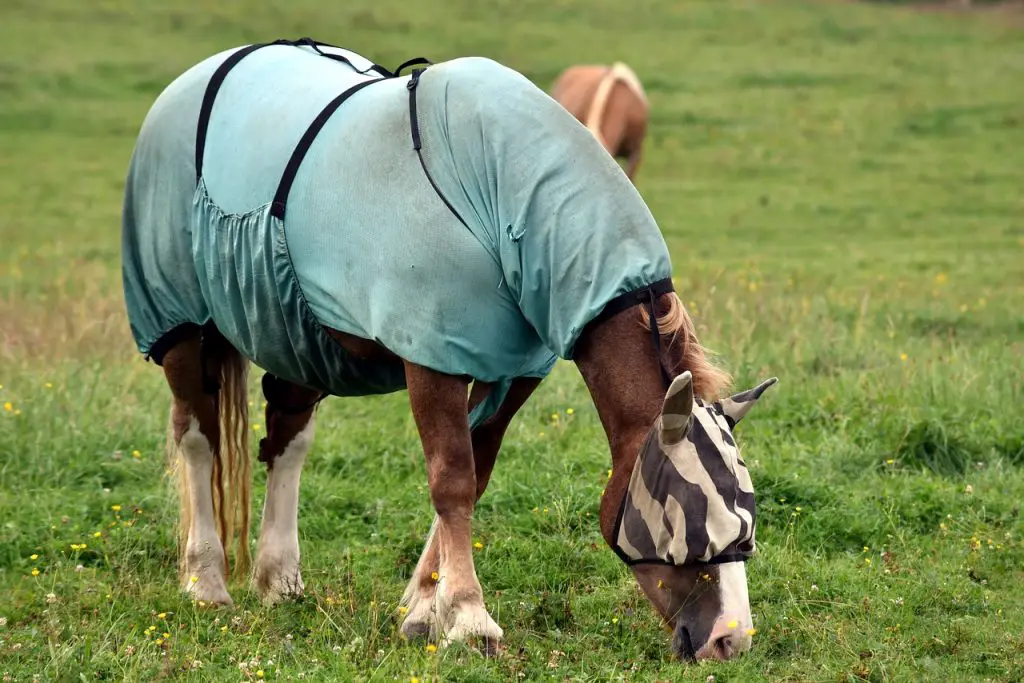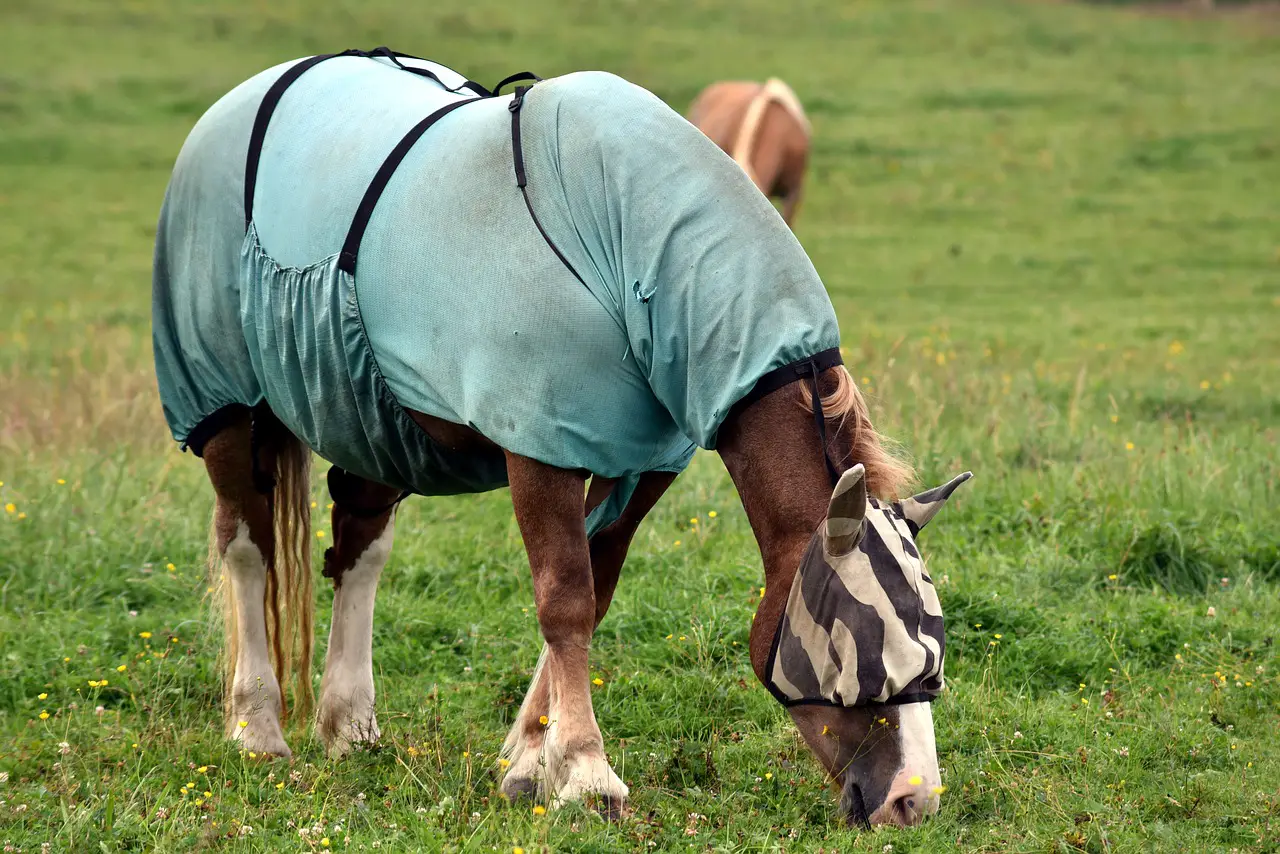Last Updated on February 25, 2022 by Allison Price
It’s simple. Put on your blanket when your horse is cold. If he isn’t cold, remove the blanket. How do you know if he is cold? What kind of blanket should he use if he’s cold? It could cause rub marks.
Blanketing does not have to be a mystery. Two Extension specialists educate horse owners every day. They’ll answer all your questions about horse outerwear.
Do my horses need a blanket in winter?
It is unlikely, in a nutshell. The horses’ bodies are well-equipped to withstand even the coldest temperatures. As the days get shorter and the nights cool down, you’ll notice that their coats start to change and grow. This is usually around September.
“Changes of the hair coat are as much light-dependent as they are temperature-dependent,” explains Bob Coleman, MS, PhD, a former resident of Alberta, Canada, who is now the associate professor of equine Extension at the University of Kentucky’s Department of Animal Sciences, in Lexington.

Healthy horses should have full coats and a body condition score of at least 4. (See our Equine Condition Score poster). Access to shelter may be sufficient if temperatures drop below 10 to 0 degrees F. Karen Waite, MS. PhD. Extension specialist at Michigan State University’s Department of Animal Sciences in East Lansing.
She adds that if a horse begins to shiver, you might consider blankets. However, this is unlikely unless the horse is cold and damp.
What if my horse has been body-clipped?
You should provide protection for your horse if you have been riding him through winter enough to warrant body-clipping or trace.
Coleman says, “Even though they are inside, if it is cold in the barn, and they don’t move around much, it might be helpful to give them some protection to keep their body heat in.”
When temperatures reach the 40s, you can put a lightweight or medium-weight blanket on your horse’s body. Once temperatures drop below freezing, it is time to switch to a heavier blanket.
Are You Stunned by Shock?
In dry winters, blanketing can be quite difficult. “Using fabric softener, static guard, or blankets with static guard can help. You can also smoothen the horse’s hair using a dryer sheet (preferably something that is gentle for babies or sensitive skin),” Karen Waite, MS. PhD, an equine Extension specialist at Michigan State University. This problem can be avoided by taking the blanket off and placing it over the horse’s head rather than dragging it over the body.
What does it mean to be light-, medium-, or heavyweight?
This is why horses have wardrobes that rival those of us. To cater for a wide range in temperatures and management factors, blanket manufacturers classify their blankets by insulation factor.
Waite says that blankets are warmer if they have more fill. The environment and the way they are managed (indoors or outdoors) will all play a role in deciding which blanket you should choose. ).”
Blanket manufacturers often provide guidelines on which blankets to use under what circumstances. Ask about them when you are shopping.
What size blanket should my horse have?
This one is more complicated. Waite says that you can measure your horse’s blanket by standing him up squarely and placing a measuring tape at the middle of his chest. This is just below the point where the neck joins with the body. She suggests that you recruit a helper to wrap the tape around your horse’s chest, the broadest part of his shoulder, and along the side to the point where the buttocks meet the tailhead. This measurement in inches corresponds to the size of your horse’s blanket. Coleman suggests that you go to a fabric and hardware store and purchase a tape measure that measures the length of your horse.
Waite notes that although blanket sizes are generally fairly standard, there might be slight differences among brands. It is a good idea to contact the manufacturer to verify that they have any other suggestions when measuring. Sometimes, online retailers also have customer reviews that can help you determine the size of your blanket. These sheets are large, and this blanket fit me better than my lighter-breed horse. ).
Coleman says that you should make sure the leg straps on your blanket are secured and allow your horse to wear it in his stall. Do not wait for your horse to start tearing through an icy paddock before you check if the flaps and fasteners are bothering him.
How can I tell if my horse’s blanket is too warm?
Your horse may be too hot if he starts to sweat underneath his blanket. This isn’t always obvious so be aware of subtle signs.
Horses naturally gravitate towards sunlight on cold days. This is a great way to warm up. You might see steam around the horses’ withers or the blanket. Coleman says that in those situations, the horses are getting too hot. It’s not the heat, but the damp.
Coleman states that once the sun sets, they will be wet and cold and start to shiver. Coleman compares it to the way you would feel if your sweat washed out of stalls and you walked outside in the cold. “Your insulation materials are now damp, so you get colder faster.” Horses feel the same way.
Blanketing Cheat Sheet
This guide can be used as a guide when you make blanketing decisions. The type of blanket you choose will depend on your horse’s age, health, and whether or not he has been turned out.
| Temperature | Unclipped | Clipped |
| Above 50deg F | no blanket | No blanket, no sheet |
| 40-50deg F | no blanket | Sheet or lightweight |
| 30-40deg F | No blanket or lightweight | From light to medium-heavyweight |
| 20-30deg F | No blanket or light-to-midweight. | heavyweight |
| 10-20deg F | From light to medium-heavyweight | Heavyweight plus a sheet/liner |
| Below 10deg F | heavyweight | Heavyweight plus a sheet, liner, or neckcover |
Can I blanket my horse in winter to prevent him from getting a great coat next year?
Nope. No. According to our sources, this old wives tale has no merit. Your horse’s body will prepare for winter months ahead like clockwork when the seasons change and the days get shorter.
Coleman says, “I have seen many horses with blankets on. And when you turn them out (the next winter), they become Thelwell ponies. As happy as can be.”
My horse has moved to a warmer climate in mid-winter. What should I do?
A horse moving north will experience a much more difficult transition than a horse moving south.
Waite says that horses without winter coats should be covered, hooded and closely monitored for weight loss, shivering, etc. in the event of a midwinter move north. These horses are very vulnerable to cold and will require shelter, especially in the first year.
Coleman recommends investing in a blanket that has a higher insulation value if you are traveling to colder climates. He also suggests that the horse’s hair might be a little longer if you are traveling from Canada to Florida in December. You might have to reduce the insulation value, or remove the blanket entirely. If he is extremely hot, you can even body-clip him.
Coleman says that horses can adapt very quickly. “If we make their hair grow longer, they will adapt. Give them a year. They are pretty good at growing hair biologically.
Understanding Blanket Jargon
- Cordura This strong, mildew-resistant and water-resistant synthetic nylon nylon is very popular for making turnout rugs.
- Denier This is the measure of nylon fiber density. It indicates how durable and resistant a blanket is to water. The harder a blanket is, the higher its denier. In turnout rugs, look for a denier above 1200.
- Gusset These triangles of fabric that look like a pleat are sewn to the shoulders of horse’s blanket. They allow for more movement.
- Hood Horses with severe winter conditions, such as competition horses or body-clipped horses might be able to benefit from a neck or hood for warmth and/or hair growth.
- Lining Blanket Linings can be made from a variety materials such as nylon, cotton, or mesh. While cotton or poly linings can be warm and absorbent, mesh linings, on the other hand, are cool and breathable.
- Liners are different from linings that are built in. They also come in a variety weights and fill materials.
- Sheet Horses can use these lightweight blankets in mild climates. They can be worn in layers underneath thicker blankets or inside the barn.
- Surcingle Most blankets have at least two or three of these straps running underneath the belly to hold it in place. These metal clasps attach to the blanket’s side.
- Weight The blanket’s insulation content in polyester fill. The fill can be as low as 0 grams in lightweight blankets and as high at 400g in heavyweights.
—Alexandra Beckstett
Do foals born in winter require blankets?
The environment a foal is living in will determine whether he needs a blanket. Coleman suggests that you don’t rush to buy a blanket for a newborn foal if he is kept in a protected stall.
Waite says that although foals may not require blankets if they live in heated barns, most foals born in winter will still benefit from blankets to retain body heat. “Foals who are born in winter in northern climates will be kept inside and usually covered with a blanket.
Do my senior horses need a blanket?
As they age, horses go through biologic changes that may lead to owners blanketing them. Many horses don’t have as much muscle mass and fat stores as they did during their primes, which can lead to a drop in body condition score. Coleman recommends blanketing seniors horses with scores below 5, especially to protect them against the wind.
He explained that horses with a shorter hair length will have a different type of hair. It will be longer and rougher but it won’t get thicker.
How can I avoid ugly rub marks?
Make sure your blanket fits. To ensure your horse’s blanket fits, measure him as per the instructions on the previous page. If necessary, make any adjustments.
Waite states that shoulder protectors and blanket liners will help to prevent this issue. You should be able slide your hand underneath the blanket and up to the shoulder. Rubbish may occur if the blanket is too tight or pinches in any one area.
Take-Home Message
It turns out that blanketing can be a very big responsibility. Waite says that blanketing horses is not enough. You must make sure that blankets don’t get soaked, change them if they do and inspect them every day.
Coleman says, “We put blankets, don’t check that they fit correctly, don’t make sure they stay dry, and then we wonder why they don’t work.” Keep in mind, however, that just because the blanket is on doesn’t mean it’s not necessary to take it off every day.
Make sure you have enough blanket for your horse, check his condition, and keep an eye on the weather. You can also lift it as necessary, but you’ll still be burning calories!


